BMW electric launches in Frankfurt: BMW will be showing the giant, three-row SUV, BMW Concept X7 iPerformance just ahead of of the Frankfurt auto show. It will be available as a plug-in  hybrid that’s expected to be competitive in the luxury utility segment. Photos went out unexpectedly ahead of time. Production will launch in 2018. BMW executives have said the X7 will go on sale in the U.S. market in early 2019. There’s also an i-Series model, that could be the long-anticipated i5 sedan, that will be revealed next week. It will be one of 12 all-electric vehicles launched by 2025, bringing the total to 25 electrified vehicles offered, BMW’s CEO said.
hybrid that’s expected to be competitive in the luxury utility segment. Photos went out unexpectedly ahead of time. Production will launch in 2018. BMW executives have said the X7 will go on sale in the U.S. market in early 2019. There’s also an i-Series model, that could be the long-anticipated i5 sedan, that will be revealed next week. It will be one of 12 all-electric vehicles launched by 2025, bringing the total to 25 electrified vehicles offered, BMW’s CEO said.
Maven taking off: Julia Steyn, vice president-Urban Mobility and Maven at General Motors, says that Maven is booming with its consumer base and revenue growing tenfold each month. Its fleet is scheduled to have 1,000 Chevrolet Bolts as GM meets Maven’s orders in the coming months. The 136 Bolts put into service over the first half of the year have logged 1.85 million miles so far. Its Maven Gig program people looking to make money providing rides through Uber or Lyft, or Grubhub food takeout deliveries, or Instacart grocery shopping and delivery.
AltCar Expo panels: Just as a reminder, there’s a great conference coming up next week – AltCar Expo & Conference will be on Friday and Saturday, Sept. 15-16 in Santa Monica. Here are titles of the workshops and events for Friday:
- Building the Foundation for a Sustainable Fleet
- Fleets Tapping into Local Resources for Clean Vehicles & Fuels
- AltCar Award Presentation
- NAFA Awards & Scholarships
- The Role Car Companies Will Play in Ever-Shifting Landscape of Future Mobility
- The Latest on MUD and Workplace Charging Projects and Progress
And don’t forget to look at Saturday’s speaker panel and hours open for the ride and drive. I’ll be moderating the second fleet panel on Friday morning – looking forward to seeing you there.

 kWh battery and an 80-kilowatt electric motor. The Japanese automaker promised to release a faster, more powerful version with longer range in 2019. The new Leaf is not meeting the 200-mile electric vehicle standard that’s becoming the norm, but it is going about 40 miles further than the current Leaf and costs a bit less; and it can deliver 147 horsepower, 38% more than the previous version. It’s got a new sharp-edged aerodynamic look and a few tech features. That includes the ProPILOT advanced driver assistance system, ProPILOT Park, and the e-Pedal that allows for accelerating, decelerating and stopping the car by using the accelerator pedal alone.
kWh battery and an 80-kilowatt electric motor. The Japanese automaker promised to release a faster, more powerful version with longer range in 2019. The new Leaf is not meeting the 200-mile electric vehicle standard that’s becoming the norm, but it is going about 40 miles further than the current Leaf and costs a bit less; and it can deliver 147 horsepower, 38% more than the previous version. It’s got a new sharp-edged aerodynamic look and a few tech features. That includes the ProPILOT advanced driver assistance system, ProPILOT Park, and the e-Pedal that allows for accelerating, decelerating and stopping the car by using the accelerator pedal alone.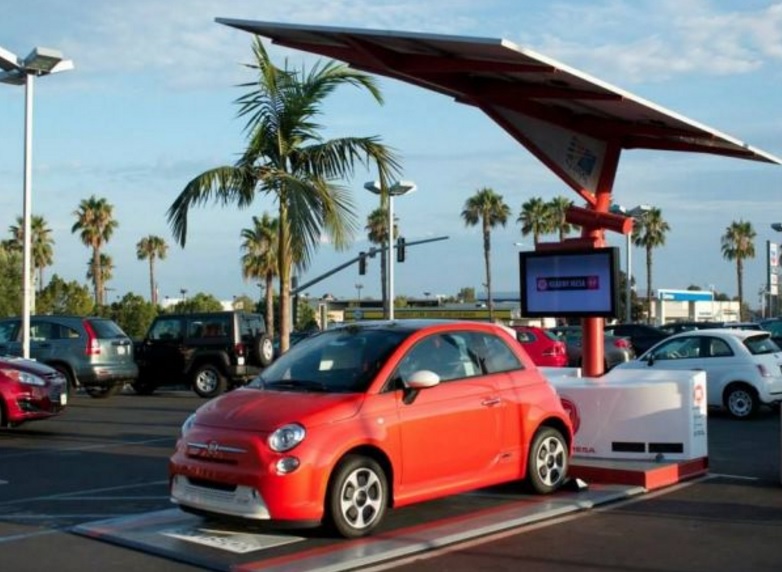 conduct studies on the best ways to write and implement EV rebate legislation. The report won’t be due until Sept. 1, 2019. Language was also removed from AB 1184 that offered a formula for providing higher rebate amounts. The full legislature will consider the amended bill. The $3 billion originally in AB 1184 would have offered rebates until 2030. It would have been six times higher than the nearly $500 million spent on EV rebates so far in the state.
conduct studies on the best ways to write and implement EV rebate legislation. The report won’t be due until Sept. 1, 2019. Language was also removed from AB 1184 that offered a formula for providing higher rebate amounts. The full legislature will consider the amended bill. The $3 billion originally in AB 1184 would have offered rebates until 2030. It would have been six times higher than the nearly $500 million spent on EV rebates so far in the state.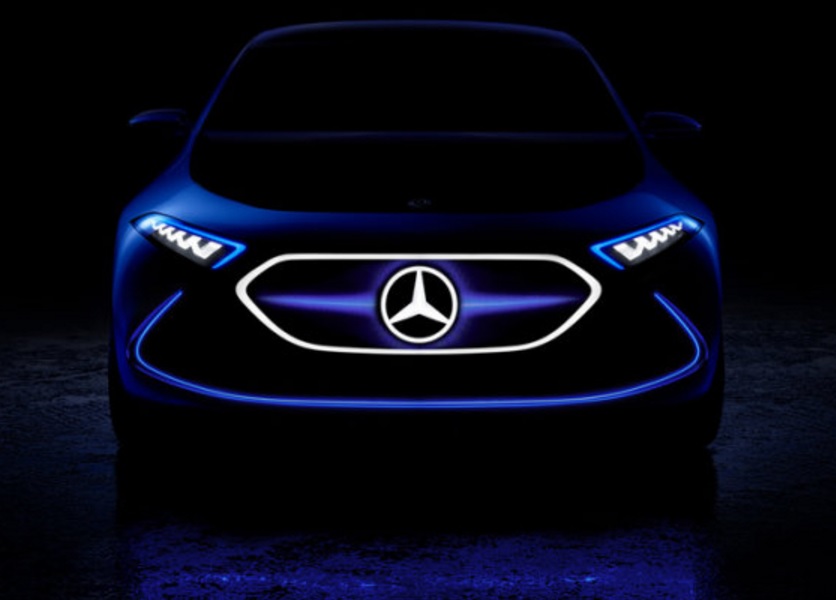 ike the Generation EQ Concept show last year in Paris; it could be an electric sedan but most likely will be a small crossover or hatchback. It’s not going to roll out until 2020 or later as a production vehicle, and Mercedes-Benz is expected to reveal a few other electric EQ concept vehicles by that time. The company will also be showing a small autonomous concept car in Frankfurt called the Smart Vision EQ.
ike the Generation EQ Concept show last year in Paris; it could be an electric sedan but most likely will be a small crossover or hatchback. It’s not going to roll out until 2020 or later as a production vehicle, and Mercedes-Benz is expected to reveal a few other electric EQ concept vehicles by that time. The company will also be showing a small autonomous concept car in Frankfurt called the Smart Vision EQ. ridesharing venue through
ridesharing venue through 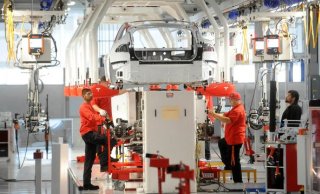 Workers union with charges of unfair labor practices. The Fremont factory has been picking up production volume as the Tesla Model 3 is being delivered to first buyers, and with production volumes speeding up later this year. Tesla sees it as a campaign by UAW to unionize Tesla workers, which has failed to gain enough support so far to win a union election. Employees have voiced their own concerns about working conditions in the factory. A study released by Worksafe in May found injuries at the Fremont plant to be much higher than the industry average in recent years.
Workers union with charges of unfair labor practices. The Fremont factory has been picking up production volume as the Tesla Model 3 is being delivered to first buyers, and with production volumes speeding up later this year. Tesla sees it as a campaign by UAW to unionize Tesla workers, which has failed to gain enough support so far to win a union election. Employees have voiced their own concerns about working conditions in the factory. A study released by Worksafe in May found injuries at the Fremont plant to be much higher than the industry average in recent years.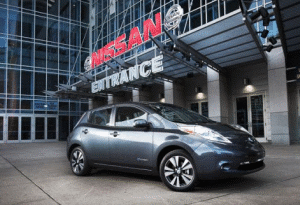 well lately, with an 8.3% increase over July. At 9,685 units sold in the U.S. so far in 2017, it’s up 22.3% over that same period last year. There’s been a lot of interest in the Leaf lately with the all-new version being launched in September. It will be longer range than the current Leaf and will feature a new set of tech features, including ePedal. Consumers are looking for more affordable electric cars and have a lot of interest in the new Leaf, along with the Tesla Model 3 and Chevy Bolt.
well lately, with an 8.3% increase over July. At 9,685 units sold in the U.S. so far in 2017, it’s up 22.3% over that same period last year. There’s been a lot of interest in the Leaf lately with the all-new version being launched in September. It will be longer range than the current Leaf and will feature a new set of tech features, including ePedal. Consumers are looking for more affordable electric cars and have a lot of interest in the new Leaf, along with the Tesla Model 3 and Chevy Bolt.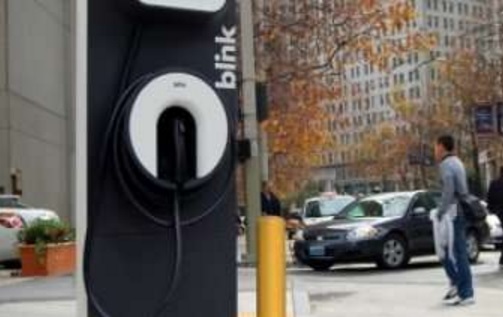 2013. Car Charging Group began operating thousands of Blink charging stations, and the software that manages, monitors, and tracks these stations and stores charging data. Blink Charging Co. also started a 1 for 50 reverse stock split, effective two days ago. After a period of 20 business days from then, the company’s stock symbol will be CCGID and will then revert to CCGI. The company’s website has switched over to www.BlinkCharging.com. “Changing the name of the Company to Blink Charging continues our integration efforts and corporate rebranding, which allows us to unify our identity and illustrates the company’s primary products and services,” stated Mike Calise, Blink Charging’s CEO. “The reverse split is also another step in the right direction towards achieving a listing on a national stock exchange and to build additional shareholder value.”
2013. Car Charging Group began operating thousands of Blink charging stations, and the software that manages, monitors, and tracks these stations and stores charging data. Blink Charging Co. also started a 1 for 50 reverse stock split, effective two days ago. After a period of 20 business days from then, the company’s stock symbol will be CCGID and will then revert to CCGI. The company’s website has switched over to www.BlinkCharging.com. “Changing the name of the Company to Blink Charging continues our integration efforts and corporate rebranding, which allows us to unify our identity and illustrates the company’s primary products and services,” stated Mike Calise, Blink Charging’s CEO. “The reverse split is also another step in the right direction towards achieving a listing on a national stock exchange and to build additional shareholder value.”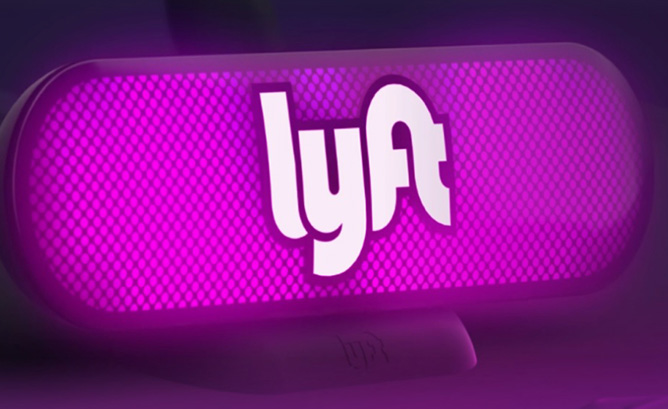 An upgraded smartphone app has helped, along with a new marketing campaign that’s helping Lyft grow from serving 160 more cities for a total of about 350. Lyft is an ideal situation, with its General Motors partnership and recent deals with other companies on autonomous vehicle test projects. Uber’s excessive market valuation and ability to raise about $14 billion in private equity since its inception is causing a huge shakeup as investors want to see transparent, professional management of the company. Uber this week hired Expedia CEO Dara Khosrowshahi to take the place of ousted and controversial founder Travis Kalanick. The new CEO is also known for being outspoken, and is expected to bring the company forward to an initial public offering within 18 to 36 months. Lyft co-founders Logan Green and John Zimmer work on keeping the company simple and direct. They say they haven’t done beyond asking employees and drivers to make sure passengers are treated like guests at a fine hotel.
An upgraded smartphone app has helped, along with a new marketing campaign that’s helping Lyft grow from serving 160 more cities for a total of about 350. Lyft is an ideal situation, with its General Motors partnership and recent deals with other companies on autonomous vehicle test projects. Uber’s excessive market valuation and ability to raise about $14 billion in private equity since its inception is causing a huge shakeup as investors want to see transparent, professional management of the company. Uber this week hired Expedia CEO Dara Khosrowshahi to take the place of ousted and controversial founder Travis Kalanick. The new CEO is also known for being outspoken, and is expected to bring the company forward to an initial public offering within 18 to 36 months. Lyft co-founders Logan Green and John Zimmer work on keeping the company simple and direct. They say they haven’t done beyond asking employees and drivers to make sure passengers are treated like guests at a fine hotel. truck will have a 44,000-lb. maximum payload and about 100 miles of range. That beats Tesla’s announcement, which takes place next month and is expected to focus on a 200-300 mile range electric semi truck. Named AEOS after a four-winged horse-driven chariot from Greek mythology, the Cummins electric truck (built by Roush) follows an announcement in June that the company will bring out an electric bus by 2019. Cummins is looking for vehicle manufacturers to work with and large fleets interested in buying them. For now, the electric heavy-duty truck is in the concept phase. The company is well known by fleets for its natural gas truck engines.
truck will have a 44,000-lb. maximum payload and about 100 miles of range. That beats Tesla’s announcement, which takes place next month and is expected to focus on a 200-300 mile range electric semi truck. Named AEOS after a four-winged horse-driven chariot from Greek mythology, the Cummins electric truck (built by Roush) follows an announcement in June that the company will bring out an electric bus by 2019. Cummins is looking for vehicle manufacturers to work with and large fleets interested in buying them. For now, the electric heavy-duty truck is in the concept phase. The company is well known by fleets for its natural gas truck engines.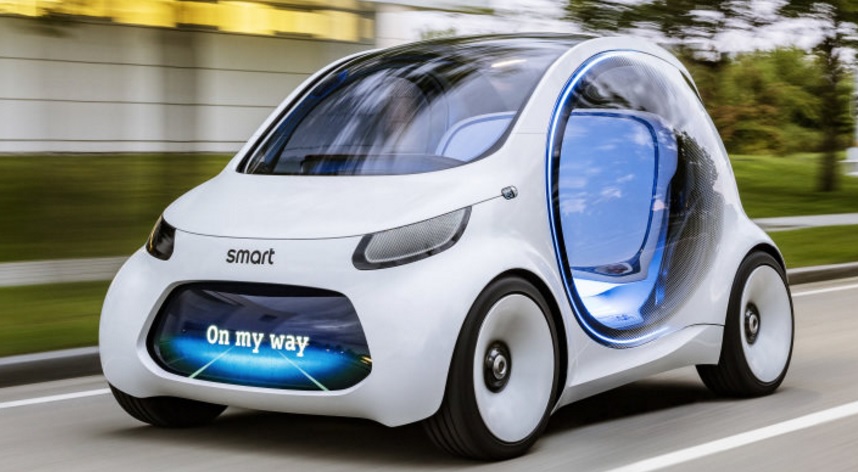 tapping into the company’s CASE philosophy –
tapping into the company’s CASE philosophy – 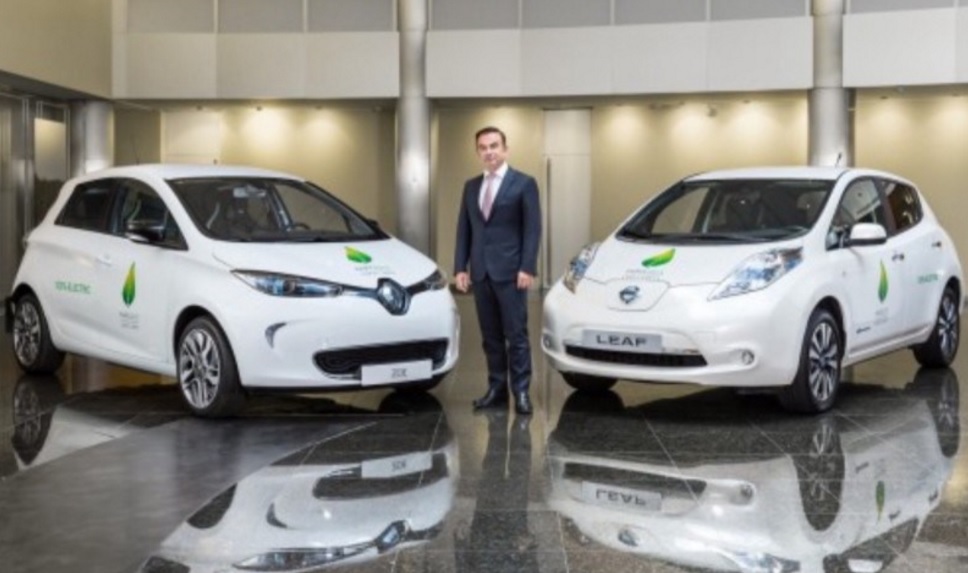 by 2019 through eGT New Energy Automotive Co., Ltd., the new company. The three companies have been in alliance for years with a shared factory already in place. It will tie into CEO Carlos Ghohn strategy to maximize economies of scale and become more EV competitive, along with Donfeng’s mission to bring “light, electric, intelligent, interconnected and shared” vehicles to the new energy vehicle market. China is in the process of becoming stricter on subsidies and watching out for another cheating scandal. The government is expected to soon announce a zero emission vehicle mandate similar to California’s. Whatever the government requires, automakers are not backing off China’s booming EV market.
by 2019 through eGT New Energy Automotive Co., Ltd., the new company. The three companies have been in alliance for years with a shared factory already in place. It will tie into CEO Carlos Ghohn strategy to maximize economies of scale and become more EV competitive, along with Donfeng’s mission to bring “light, electric, intelligent, interconnected and shared” vehicles to the new energy vehicle market. China is in the process of becoming stricter on subsidies and watching out for another cheating scandal. The government is expected to soon announce a zero emission vehicle mandate similar to California’s. Whatever the government requires, automakers are not backing off China’s booming EV market.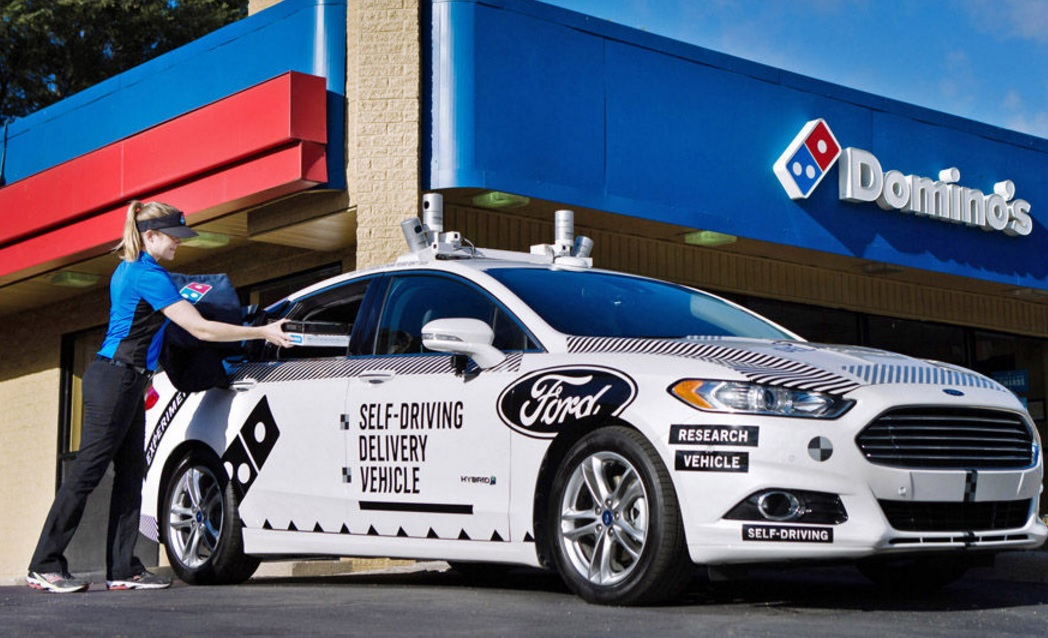 a pizza through a self-driving vehicle. Over the next few weeks, customers in Ann Arbor, Mich., will have the opportunity to receive their order from a Ford Fusion Hybrid Autonomous Research Vehicle. It will be manually-driven by a Ford safety engineer and staffed with researchers. Ford plans to begin producing self-driving vehicles in 2021 and will tap into the data from this test project.
a pizza through a self-driving vehicle. Over the next few weeks, customers in Ann Arbor, Mich., will have the opportunity to receive their order from a Ford Fusion Hybrid Autonomous Research Vehicle. It will be manually-driven by a Ford safety engineer and staffed with researchers. Ford plans to begin producing self-driving vehicles in 2021 and will tap into the data from this test project.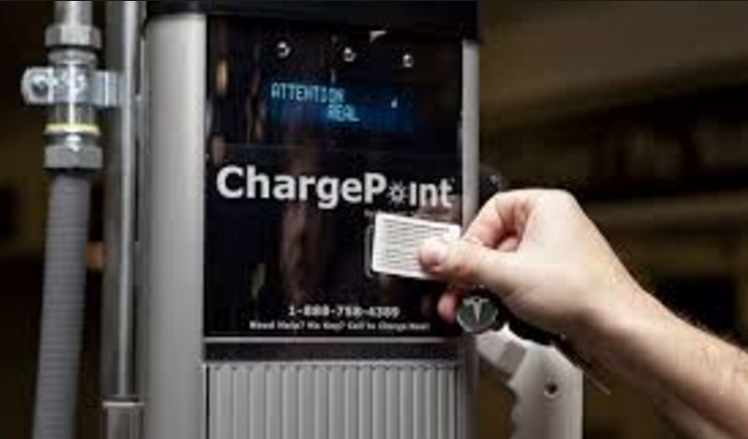 ChargePoint, operator of one of the world’s largest charging station networks for electric cars, joins other players in the game including utilities, engineering groups, automakers, and startups seeking to establish strong footing. BMW, Daimler, and Siemens already have a strong presence in Europe as demand continues to increase – and they see ChargePoint as an option to expand their networks. The charging company has so far raised about $300 million in funds, with Daimler and Siemens joining up this year. BMW first supplied funds in 2012. The company also operates about 40,000 charging spots in the U.S. and Mexico.
ChargePoint, operator of one of the world’s largest charging station networks for electric cars, joins other players in the game including utilities, engineering groups, automakers, and startups seeking to establish strong footing. BMW, Daimler, and Siemens already have a strong presence in Europe as demand continues to increase – and they see ChargePoint as an option to expand their networks. The charging company has so far raised about $300 million in funds, with Daimler and Siemens joining up this year. BMW first supplied funds in 2012. The company also operates about 40,000 charging spots in the U.S. and Mexico. leaving in June. Kalanick had been overseeing the company as it eventually reached $70 billion in estimated market valuation until a series of controversies took over this year – driving investors to shake up Uber management. Khosrowshahi has been an outspoken critic of the Trump administration’s immigration policy, which was another heated issue for Uber earlier this year. His family had immigrated to the U.S. during the Iranian revolution. Expedia, along with Amazon, became one of two technology companies to contribute declarations to a lawsuit filed by Washington State’s attorney general objecting to the travel ban executive order. That had focused on seven predominantly Muslim countries. Other finalists for the Uber CEO position include Jeffrey Immelt, the former chief of General Electric, and Meg Whitman, the chief of Hewlett Packard Enterprise, the sources said.
leaving in June. Kalanick had been overseeing the company as it eventually reached $70 billion in estimated market valuation until a series of controversies took over this year – driving investors to shake up Uber management. Khosrowshahi has been an outspoken critic of the Trump administration’s immigration policy, which was another heated issue for Uber earlier this year. His family had immigrated to the U.S. during the Iranian revolution. Expedia, along with Amazon, became one of two technology companies to contribute declarations to a lawsuit filed by Washington State’s attorney general objecting to the travel ban executive order. That had focused on seven predominantly Muslim countries. Other finalists for the Uber CEO position include Jeffrey Immelt, the former chief of General Electric, and Meg Whitman, the chief of Hewlett Packard Enterprise, the sources said.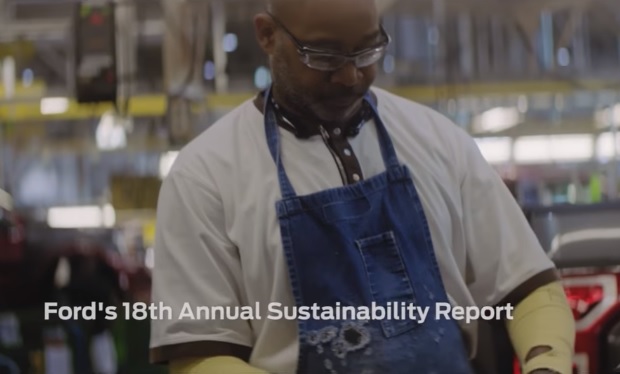 drinkable water in manufacturing. Since 2000, Ford has cut water use by more than 61 percent. It’s partnership with Jose Cuervo continued using agave plants for sustainable bioplastics being placed in Ford vehicles. Now about 300 vehicle parts come from renewable sources such as soybeans, cotton, wood, flax, jute, and natural rubber. Its aluminum closed-loop recycling system recycles about 20 million pounds of military-grade aluminum alloy per month, enough to build more than 37,000 F-Series truck bodies a month. Ford continues to reduce the footprint of its supply chain with an enhanced Partnership for a Cleaner Environment program that has grown to more than 40 suppliers in 40 countries – up from 25 suppliers in 2015. The automakers zero-waste-to-landfill program has been expanded to a total of 82 Ford facilities around the world, where no waste is sent to landfills. You can read the company’s 18th annual sustainability report to learn more, plus read and watch a video on improving safety and fuel economy, reducing manufacturing carbon dioxide, the company global electrification strategy, and sustainable mobility services.
drinkable water in manufacturing. Since 2000, Ford has cut water use by more than 61 percent. It’s partnership with Jose Cuervo continued using agave plants for sustainable bioplastics being placed in Ford vehicles. Now about 300 vehicle parts come from renewable sources such as soybeans, cotton, wood, flax, jute, and natural rubber. Its aluminum closed-loop recycling system recycles about 20 million pounds of military-grade aluminum alloy per month, enough to build more than 37,000 F-Series truck bodies a month. Ford continues to reduce the footprint of its supply chain with an enhanced Partnership for a Cleaner Environment program that has grown to more than 40 suppliers in 40 countries – up from 25 suppliers in 2015. The automakers zero-waste-to-landfill program has been expanded to a total of 82 Ford facilities around the world, where no waste is sent to landfills. You can read the company’s 18th annual sustainability report to learn more, plus read and watch a video on improving safety and fuel economy, reducing manufacturing carbon dioxide, the company global electrification strategy, and sustainable mobility services.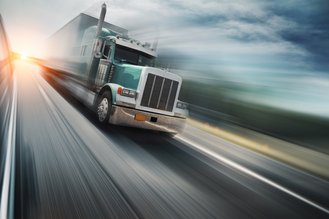 said he met with Tesla earlier this year to discuss what the Tesla Semi truck will be like that CEO Elon Musk announced last year and said would be revealed in September. It will be ideal for short-haul trucking and won’t have anything like the capacity of 1000-miles per fueling big rigs typically seen on U.S. highways. The Tesla Semi could work for companies needing freight hauling from ports to warehouses and other day trips. Tesla will face a series of challenges including ramping up later this year for the Tesla Model 3.
said he met with Tesla earlier this year to discuss what the Tesla Semi truck will be like that CEO Elon Musk announced last year and said would be revealed in September. It will be ideal for short-haul trucking and won’t have anything like the capacity of 1000-miles per fueling big rigs typically seen on U.S. highways. The Tesla Semi could work for companies needing freight hauling from ports to warehouses and other day trips. Tesla will face a series of challenges including ramping up later this year for the Tesla Model 3.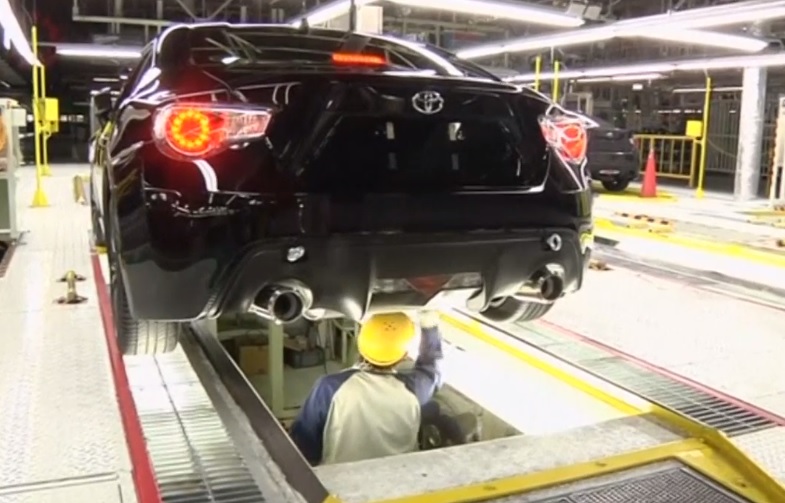 to-30 minutes using fast chargers for a range of just 185 to 250 miles. The first Toyota electric vehicle built on the new platform will come as early as 2022. Toyota is ready to compete with market leaders including Nissan and Tesla as EVs become more widely adopted in the next few years. An in-house unit led by President Akio Toyoda is working on developing and marketing a new lineup of EVs, as the company changes course from its previous path focusing only on hybrids and hydrogen fuel cell vehicles as alternative powertrains. The automaker has also been reported to plan entry into mass production of EVs in China as early as 2019.
to-30 minutes using fast chargers for a range of just 185 to 250 miles. The first Toyota electric vehicle built on the new platform will come as early as 2022. Toyota is ready to compete with market leaders including Nissan and Tesla as EVs become more widely adopted in the next few years. An in-house unit led by President Akio Toyoda is working on developing and marketing a new lineup of EVs, as the company changes course from its previous path focusing only on hybrids and hydrogen fuel cell vehicles as alternative powertrains. The automaker has also been reported to plan entry into mass production of EVs in China as early as 2019.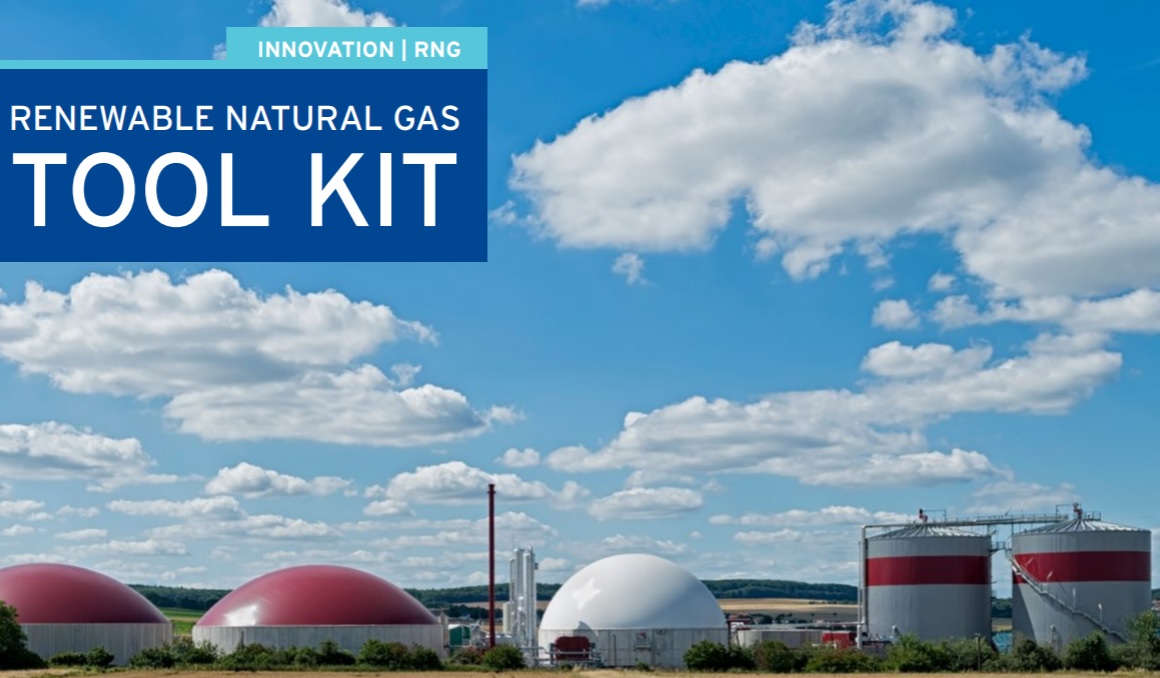 downloadable toolkit has been set up to renewable natural gas (RNG) producers and developers interested in joining up their projects with the SoCalGas pipeline network. In addition, changes have been adopted that will accelerate the interconnection process. SoCalGas reports that about 80% of all methane emissions in California come from the state’s dairy and farm operations, landfills, and wastewater treatment plants. That methane can be harnessed and cleaned to produce RNG for use in transportation as well as in homes and businesses.
downloadable toolkit has been set up to renewable natural gas (RNG) producers and developers interested in joining up their projects with the SoCalGas pipeline network. In addition, changes have been adopted that will accelerate the interconnection process. SoCalGas reports that about 80% of all methane emissions in California come from the state’s dairy and farm operations, landfills, and wastewater treatment plants. That methane can be harnessed and cleaned to produce RNG for use in transportation as well as in homes and businesses.